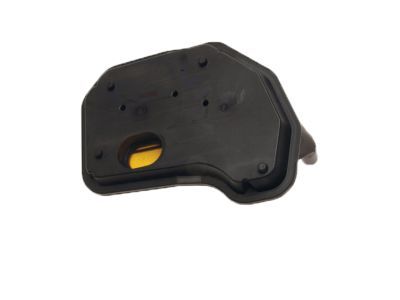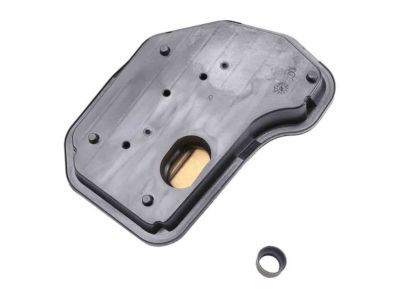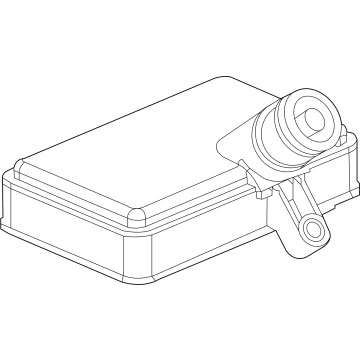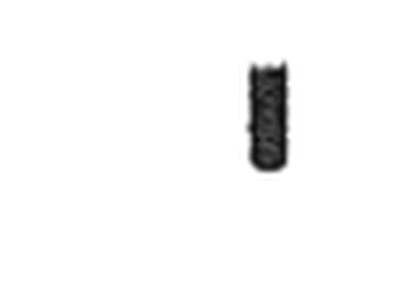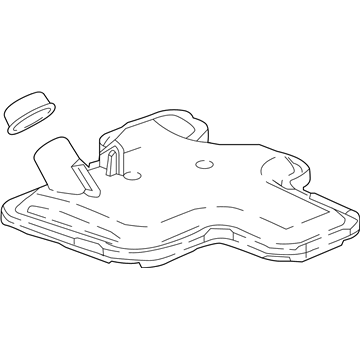
My Garage
My Account
Cart
Genuine Chevrolet Trailblazer Automatic Transmission Filter
AT Filter- Select Vehicle by Model
- Select Vehicle by VIN
Select Vehicle by Model
orMake
Model
Year
Select Vehicle by VIN
For the most accurate results, select vehicle by your VIN (Vehicle Identification Number).
4 Automatic Transmission Filters found
Chevrolet Trailblazer Filter Kit,Automatic Transmission Fluid
Part Number: 24208576$33.36 MSRP: $62.95You Save: $29.59 (48%)Chevrolet Trailblazer Filter Assembly, A/Trns Fluid
Part Number: 24290959$20.32 MSRP: $38.34You Save: $18.02 (47%)Chevrolet Trailblazer Filter Assembly, A/Trns Fluid
Part Number: 24288521$22.42 MSRP: $40.23You Save: $17.81 (45%)Ships in 1-3 Business DaysChevrolet Trailblazer Filter Assembly, A / Trns Fluid (Extrnl / Pres Side) (W/ Cvr & Seal)
Part Number: 24297793$16.74 MSRP: $31.57You Save: $14.83 (47%)Ships in 1-3 Business Days
Chevrolet Trailblazer Automatic Transmission Filter
The Automatic Transmission Filter in Chevrolet Trailblazer vehicle is very vital in preventing or solving issues affecting the transmission system. The main role is to collect abrasive particles in the transmission fluid so that they cannot block the pathways of the working fluid and damage the parts moving in the transmission. These filtrations are vital since they prevent impediment on the transmission function as well as extend its durability. Since Chevrolet Trailblazer models there have been different kinds of Automatic Transmission Filters used such the internal filters located at the back side of the transmission fluid pan and the external types the spin-on type or the cartridge type filters. Internal filters are commonly located in the product and easily available during the regular maintenance, though some designs could imply rather deep disassembly for filter replacement. However, external filters allow access to such filters to be more convenient and change them more frequently. Also, there are performance Automatic Transmission Filters that have increased efficiency when it comes to filtration as well as the flow rate and hence there is this improvement in the fuel economy as well as reduction in emissions.
Each OEM Chevrolet Trailblazer Automatic Transmission Filter we offer is competitively priced and comes with the assurance of the manufacturer's warranty for the part. Furthermore, we guarantee the speedy delivery of your orders right to your doorstep. Our hassle-free return policy is also in place for your peace of mind.
Chevrolet Trailblazer Automatic Transmission Filter Parts Questions & Experts Answers
- Q: How should the transmission fluid and Automatic Transmission Filter be drained and replaced on Chevrolet Trailblazer?A:At specified intervals, the transmission fluid should be drained and replaced, ensuring the engine has cooled down completely before starting. Purchase the appropriate transmission fluid along with a new filter and pan gasket. Necessary tools include a floor jack, jackstands for vehicle support, a drain pan with at least an eight-quart capacity, newspapers, and clean rags. Raise the vehicle securely on jackstands and place the drain pan underneath the transmission pan. If equipped with a drain plug, remove it to allow the fluid to drain, then reinsert the plug. For vehicles without a drain plug, remove all bolts except those in each corner, slowly taking out the front pan bolts to let fluid drain. Disconnect the shift linkage on the driver's side to access the pan bolts, then remove the transmission pan mounting bolts and carefully pry the pan loose. Clean the gasket surface of the transmission to remove old gasket and sealant, and clean the pan with solvent, drying it with compressed air if available. Some models have magnets in the transmission pan to catch metal debris, which should be cleaned thoroughly; a small amount of metal is normal, but significant debris may require consultation with a dealer or transmission specialist. Remove the filter from the valve body inside the transmission, taking care not to damage the aluminum gasket surface. Install a new seal and filter, ensuring the gasket surface on the transmission pan is clean before placing a new gasket on the pan. Position the pan against the transmission and install all bolts, tightening them gradually to the specified torque. Reinstall any components removed for access, lower the vehicle, and add approximately four quarts of the specified automatic transmission fluid through the filler tube. With the transmission in Park and the parking brake set, run the engine at a fast idle without racing it. Move the gear selector through each range and back to Park, then let the engine idle for a few minutes before checking the fluid level, adding more fluid as necessary to reach the proper mark on the dipstick while avoiding overfilling. Finally, check under the vehicle for leaks during the first few trips and verify the fluid level again when the transmission is hot.
Related Chevrolet Trailblazer Parts
Browse by Year
2025 Automatic Transmission Filter 2024 Automatic Transmission Filter 2023 Automatic Transmission Filter 2022 Automatic Transmission Filter 2021 Automatic Transmission Filter 2009 Automatic Transmission Filter 2008 Automatic Transmission Filter 2007 Automatic Transmission Filter 2006 Automatic Transmission Filter 2005 Automatic Transmission Filter 2004 Automatic Transmission Filter 2003 Automatic Transmission Filter 2002 Automatic Transmission Filter
